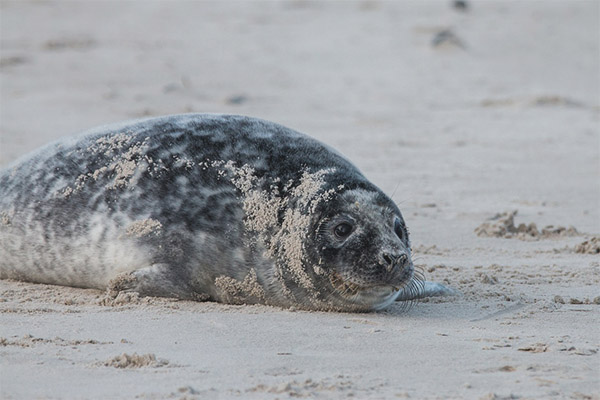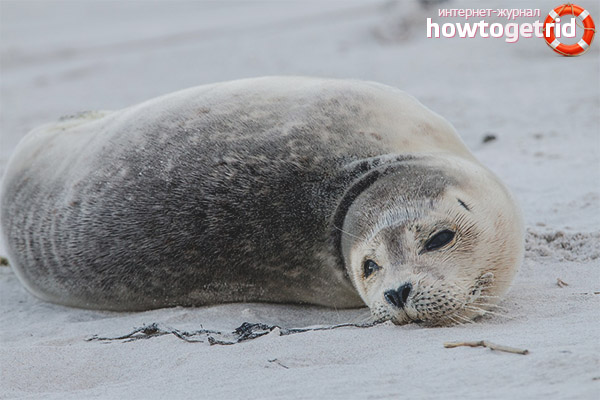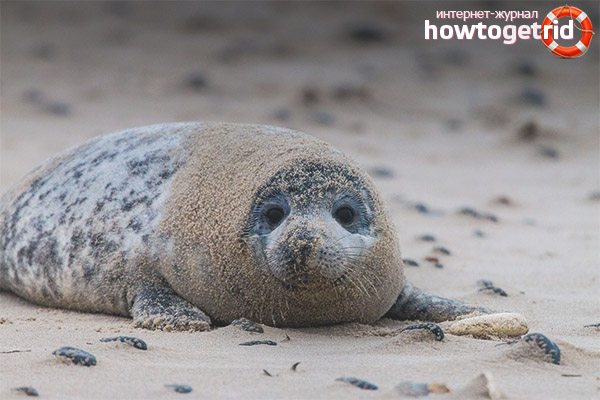The content of the article
The gray seal has another name - long-haired. These are large marine mammals. The name of the species in Latin is Halichoerus grypus. Consider the main characteristics of these amazing and comely representatives of the animal world. Where do they live? What do they look like? What do they eat?
Description
The body length of the animal is 2.1-2.5 m. Some individuals grow up to 3 m. Weight - 160-300 kg. The body is massive, the front part of the head is long. Lips are dense, have wavy edges.
Coloring of long-seal seals may be different. It depends on the sex of the animal and the area where they live. Males and females also differ in coloring. As a rule, the main body color is gray. On the back color is somewhat darker than on the stomach. Dark spots of various shapes and sizes are visible all over the body. On the back they are lighter, and on the belly - darker.
Habitat
There are they in the western part of the Atlantic. These include the Gulf of Man, Sable Island, etc. You can meet the long-sealed seal off the coast of Greenland (on the south side).
There are 2 subspecies of gray seals: the Baltic (live in the Baltic Sea), and the Atlantic (European waters and the western part of the Atlantic). Gray seals do not migrate over long distances, and are considered relatively sedentary. Representatives of the Baltic population at the time of reproduction (in December), move to the north of the sea, where they gather on ice. In the spring, they gradually settle in their habitats.
Nutrition
The basis of the diet of gray seals is fish. Very rarely and gradually they can use the same invertebrates. Can eat shrimp and squid.Individuals living in the Baltic Sea prefer cod, bream, Baltic herring. Individuals living off the Murmansk coast consume pinagor and cod.
Populations living in European waters like to eat flatfish, cod, herring.
Breeding
Representatives of this species have a difference in reproduction time. This behavior is not typical for pinnipeds. At different times, not only seals that belong to different populations, but also those that live on the same territory, produce offspring.
In Baltic seals, offspring appears before the rest. As already mentioned, for this period they gather on the ice of the northern part of the sea. For most of them, babies are born at the very end of winter or early March. All other seals breed on land. At them this process begins later in comparison with the Baltic inhabitants, but the reproduction time of different individuals differs significantly. For example, individuals living off the Murmansk coast, bring offspring in November-December. Those who live in the north-east of the UK - from October to December.Inhabitants of other areas can give birth to babies even in August or September.
The duration of pregnancy is 11 months or a little longer. But since this species is characterized by delayed implantation, out of 11 months the fetus develops only within 9 months. Newborn gray seals weigh about 16–20 kg. The length of the body is about 1 m. Their body is covered with light thick hair. In the future, it changes to hard.
During the feeding period, babies develop very intensively. The female feeds them for 3 weeks. Their weight is approximately doubled, the body is extended by 20 cm. Further, the growth slows down significantly. At the age of 2 years, a seal can weigh 55-60 kg. Gradually, the weight increases, and by the age of 5 years they can grow up to 75-100 kg. Females reach sexual maturity in 5-6 years. In males, this occurs at 7 years old, but they begin to participate in reproduction only after 3 years.
Females continue to grow and develop up to 10 years, and males - up to about 15. Some males continue to grow even longer. Adult males are approximately 35 cm longer.
Females for many years can produce offspring. Sometimes they can give birth to babies up to 30 years old and later. In males, this ability disappears at about 20 years of age.
The oldest individuals that were found in nature are male, 25 years old, and female, 35 years old. But in captivity these animals can live longer. In one of the zoos the female lived for 28 years. The male lived in captivity up to 41 years.
Behavior
Depending on the habitat, representatives of the species are distinguished by their behavior and lifestyle features. The territory of the Gulf of St. Lawrence, as well as the Baltic Sea basin is the so-called ice ecological form. During the breeding season, they inhabit coastal ice.
Individuals living in all other places, at certain times of the year, form a haul off the coast. They choose small islands and other areas that are difficult to reach. These places usually have a flat surface, and they have a gentle slope along which animals can descend into the water.
Representatives of the species are prone to herd behavior. This is especially noticeable during the breeding season. Gray seals can be both monogamous and polygamous. The first form of relationship is characteristic of true seals. The second is almost not typical for members of the family.Among all species belonging to the family, it is observed only in elephant seals.
Polygamousness is manifested exclusively in the hacks. There a harem is formed at the male, usually consisting of 2-5 females.
Number of
In total, from the eastern side of the Atlantic (with the exception of the Baltic Sea basin) there were about 45,000 long-mouthed seals.
In the western part of the range, the number of representatives of the species is much smaller. About 5,000 animals lived in these territories. At the beginning of the 70s around the world there were approximately 52-60 thousand representatives of the species.
Economic value
Since the total number of animals is relatively small, they are not of great economic importance to humans.Earlier, for the slaughter of these animals premiums were paid, as they ate large quantities of fish stocks. They were hunted by fishermen from Sweden and Finland. But for the year they did not catch more than 1000 individuals from the Baltic Sea. Later, the slaughter of long-sided seals was banned. In other territories, mining is even lower.
Video: gray seal (Halichoerus grypus)













To send